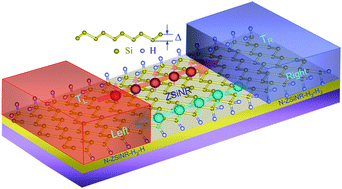A spin-Seebeck diode with a negative differential spin-Seebeck effect in a hydrogen-terminated zigzag silicene nanoribbon heterojunction
Abstract
The spin-Seebeck effect (SSE), the central topic of spin caloritronics, provides a new direction for future low power consumption technology. To realize device applications of SSE, a spin-Seebeck diode (SSD) with a negative differential SSE is very desirable. To this end, we constructed a spin caloritronics device that was composed of a ferromagnetic double–single-hydrogen-terminated zigzag silicene nanoribbon (ZSiNR-H2-H) and an antiferromagnetic double–double-hydrogen-terminated zigzag silicene nanoribbon (ZSiNR-H2-H2). By using ab initio calculations combined with nonequilibrium Green's function technique, we found that thermally driven spin current through the heterojunction featured the SSD effect and negative differential SSE. The former originates from the asymmetrical thermal-driven conducting electrons and holes, and the latter ascribes to the thermal spin compensation effect. Their physical mechanisms are much different from the previous ones mainly relying on the spin-wave excitations in the interface between metals and magnetic insulators, supporting our study that puts forward a new route to realize the SSD with a negative differential SSE.


 Please wait while we load your content...
Please wait while we load your content...